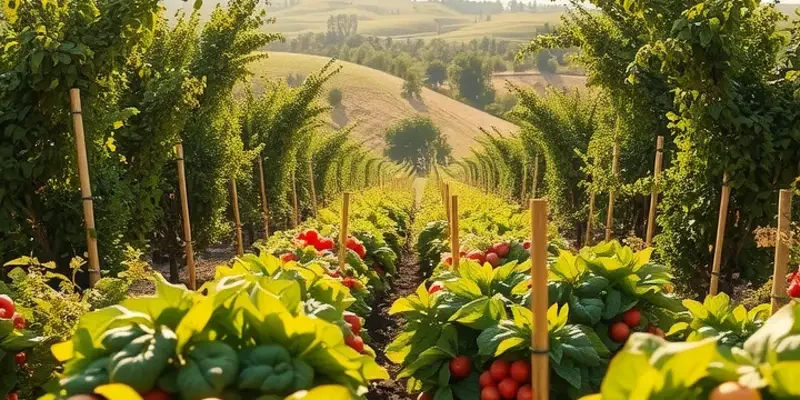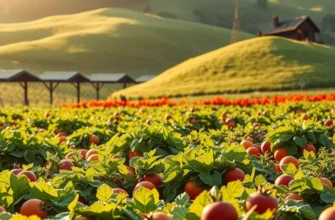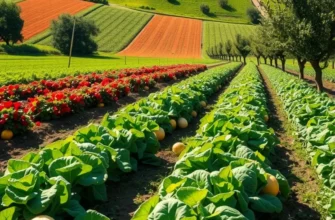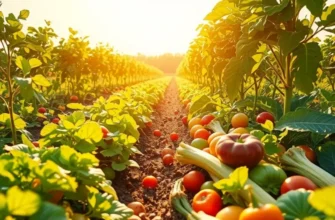Home cooking can sometimes feel restricted, especially if a staple ingredient like chickpeas is off the table. Whether for dietary restrictions or personal preference, understanding how to make delicious meals without chickpeas opens a realm of flexible cooking possibilities. This guide will explore practical ingredient guides, creative substitutions, and approachable recipes that suit everyone’s health goals and culinary explorations.
Discovering Nutritious Alternatives to Chickpeas

Chickpeas have long been a staple in many kitchens for their high protein content and versatility. Yet, sometimes dietary needs or simply a craving for variety calls for alternatives. Exploring options beyond chickpeas can open the door to exciting new recipes and nutritional benefits.
Legumes are the first stop on this journey. Lentils, for instance, come in a rainbow of colors and provide a similar protein boost. Red lentils cook quickly and blend seamlessly into soups or stews, giving dishes a subtle, earthy flavor. Their mushy texture might be ideal for thickening sauces or dips, comparable to mashed chickpeas.
For those seeking grains, quinoa stands out as a complete protein that is both gluten-free and versatile. It has a nutty flavor that complements various dishes, whether in salads or pilafs. Rinse it thoroughly before cooking to remove the bitter outer coating and enjoy its fluffy texture as a base for roasted vegetables or as a filler in vegan patties.
Vegetables like cauliflower offer a low-carb alternative. Known for its mild flavor, cauliflower can be pulsed into a rice-like texture or mashed as a base for creamy dishes. It absorbs seasonings well, making it perfect for spiced dishes that would traditionally use chickpeas. Moreover, its high fiber content can aid digestion and provide a lighter alternative.
Nuts and seeds can also serve as excellent chickpea alternatives, especially in dips and spreads. Almonds and cashews, when soaked and blended, create creamy textures perfect for dairy-free sauces or decadent spreads. They are packed with healthy fats and provide a satisfying richness.
Incorporating these substitutes requires a bit of creativity but can easily fit into your meal planning. Consider using lentils in place of chickpeas in a classic curry recipe, or swap chickpeas for cauliflower in a lighter hummus. When baking, crushed nuts or seeds can add a nutritional punch, retaining moisture in baked goods without the density of chickpeas.
For more culinary inspiration on integrating versatile ingredients into your meals, explore this guide on minimal prep dinner ideas. By experimenting with these alternative ingredients, you expand your palate and enhance your nutritional intake, all while enjoying your favorite dishes in new forms.
Cooking Techniques for Chickpea-Free Meals

Transforming your kitchen into a hub of culinary innovation starts with mastering versatile cooking techniques. While chickpeas offer a unique taste and texture, numerous alternatives also shine when prepared thoughtfully. Embracing methods such as roasting, steaming, blending, and mashing can offer delightful culinary results.
Roasting imparts a deep, nutty flavor to foods. Consider using cauliflower as an alternative. Its mild profile absorbs spices wonderfully, making it perfect for roasting. Simply cut into florets, toss with olive oil, cumin, and paprika, then roast until golden. This approach creates a crispy exterior and soft interior, ideal for salads or as a standalone snack.
Another excellent roasting candidate is sweet potato. When roasted, sweet potatoes not only develop intense sweetness but also a satisfyingly crispy skin. They can accompany main courses or be mashed afterward for a creamy side dish.
Steaming is a gentle method preserving nutrients while allowing the ingredient’s flavor to shine. Try steaming broccoli or carrots. Steamed broccoli with lemon vinaigrette or baby carrots seasoned with herbs can be refreshing additions to any meal. Both options provide vital nutrients and a vibrant color that appeals to all senses.
For those moments when a creamy texture is desired but chickpeas aren’t an option, mashing alternatives like white beans or lentils is effective. White beans, when mashed, can form a creamy base for dips or spreads. Add garlic, lemon juice, and a pinch of salt for a delightful bean dip.
Lentils, particularly the red or yellow varieties, cook quickly and mash easily, offering a smooth consistency perfect for soups or curries. Mashing them partially in a rich tomato-based sauce can create a hearty dish without a hint of chickpea.
Switching gears to something sweet, consider bananas for a blending technique. Frozen banana slices can be blended to create a smooth and creamy texture akin to soft-serve ice cream. This technique satisfies sweet cravings while keeping the dish healthful. Add cocoa powder or vanilla extract for different flavor profiles.
Exploring these techniques aligns perfectly with the goals of minimal waste cooking, ensuring nothing goes unused. Check out tips for low-waste cooking and prep in our guide. Reducing food waste not only supports your wallet but the environment too.
These cooking techniques demonstrate how simple modifications can unlock the potential of various ingredients. By highlighting flavors through roasting, preserving nutrients via steaming, or achieving tender textures with mashing and blending, meals become healthier and more exciting culinary adventures.
Final words
Cooking without chickpeas need not feel limiting; rather, it’s an opportunity to explore a broader array of ingredients and methods. By understanding the wealth of alternatives available—from beans and lentils to grains and vegetables—you can easily craft meals that fit your dietary needs without sacrificing flavor or nutrition. The right substitutions combined with versatile cooking techniques can elevate your culinary experience, making home cooking both exciting and fulfilling. Remember, cooking is all about creativity, and with a little imagination, you can transform ordinary meals into something extraordinary, even without chickpeas!







